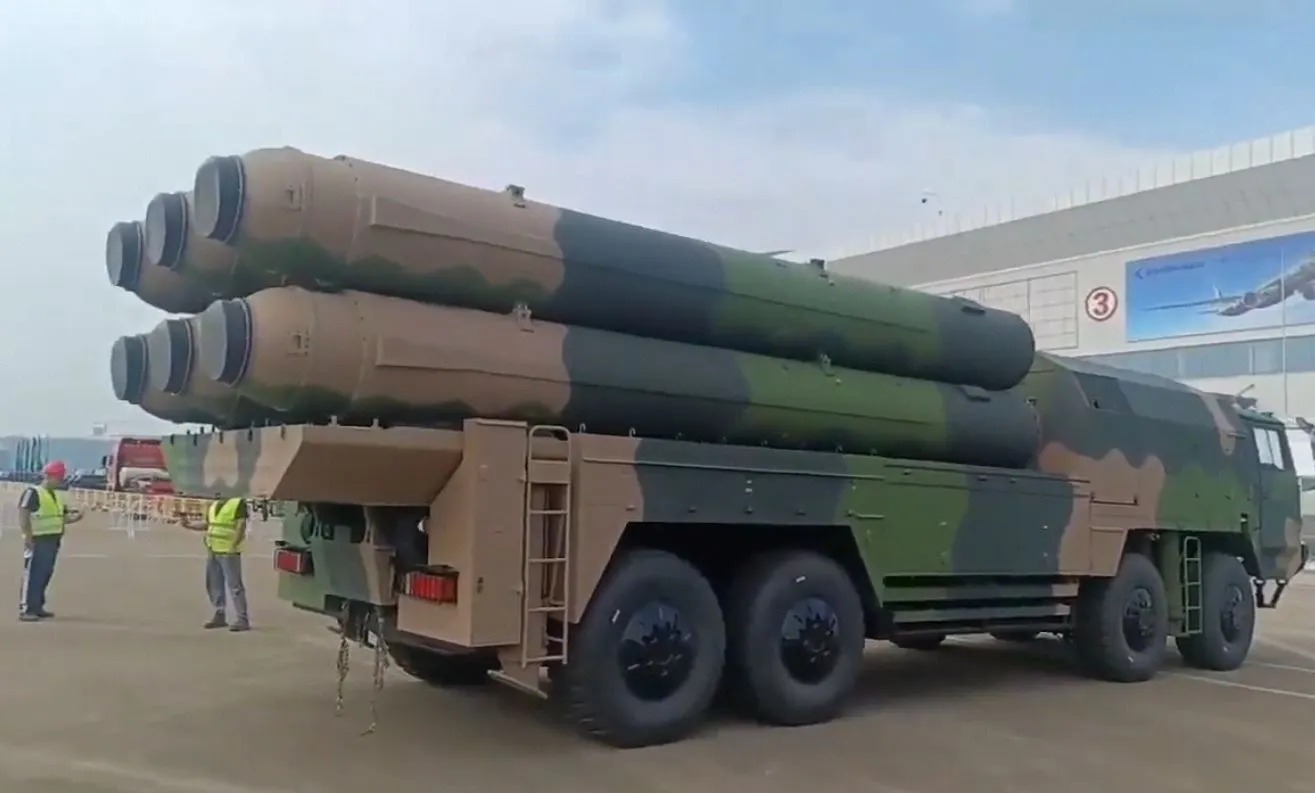Late last month, Chinese state media unveiled rare footage of an advanced long-range radar, reportedly capable of detecting missiles—including hypersonic ones—thousands of miles away.
During Chinese President Xi Jinping’s Lunar New Year address to the military, the world caught a rare glimpse of China’s formidable long-range radar system—an advanced early-warning system designed to detect threats far beyond its borders.
The end-of-year military video, sent to Xi by the People’s Liberation Army (PLA), showcased a ground-based phased-array radar station with “early warning and monitoring” troops standing in formation before it.
The footage, which featured representatives from the army, navy, air force, and aerospace force, subtly highlighted China’s growing surveillance capabilities.
Though details on the radar system remain scarce, it reappeared in a CCTV report, offering a closer look at its imposing structure—an octagonal array of dozens of antennas housed in a building roughly six stories tall.
Chinese Media Claims
According to the ‘South China Morning Post,’ analysts suggest that the long-range radar featured in the footage plays a pivotal role in Beijing’s efforts to bolster its early warning capabilities against missile threats.

Military commentator and former People’s Liberation Army’s (PLA) instructor Song Zhongping identified the structure as a “strategic, active phased-array radar,” reportedly capable of detecting missile threats within a range of several “thousand kilometers.”
Song further emphasized that this radar system is a frontline asset in China’s anti-missile defense network. “Early warnings are crucial—gaining time to mobilize countermeasures is key,” he noted. He also suggested that China is likely integrating this system to track “hypersonic missiles,” a game-changing capability in modern warfare.
In a video, standing before the massive radar, a representative of the PLA Aerospace Force delivered a resolute message: “We will strictly monitor the battlefield situation to ensure that if any threat arises, we will respond immediately.”
Strategic Location: Jiamusi’s Expanding Role
While Chinese media reports withheld the precise location of the radar station, Taiwanese defense analyst Joseph Wen identified it on X as the “Jiamusi Monitoring and Early Warning Station of the Military Aerospace Forces.”
Originally constructed before 2011, this Large Phased-Array Radar (LPAR) station underwent significant upgrades and was completed in 2021. Located in Heilongjiang Province, Jiamusi has emerged as a critical node in China’s early warning network.
According to the American think tank GlobalSecurity.org, a large, non-rotatable 30×24-meter X-band radar station was set up in Huanan County in Jiamusi. This X-band radar is capable of intercepting, tracking, and identifying targets by utilizing data from the P-band long-range early-warning phased-array radar. This integration provides precise target information for missile defense systems like Hongqi-19 and Kinetic-3. The focused X-band radar can also isolate specific objects, helping to distinguish between real threats and decoys.
In a September 2024 report, the China Aerospace Studies Institute (CASI), a think tank of the US Department of the Air Force, noted that Jiamusi hosts a deep-space radar operated by the Chinese Academy of Sciences.
Jiamusi is believed to house at least one unit of the PLA’s Strategic Support Force (SSF). However, it is unclear whether this unit operates the facility’s systems, such as the Large Phased Array Radar (LPAR), or is merely stationed at the Academy of Sciences site.
CASI’s report indicates that the Jiamusi LPAR is under the command of China’s ‘Base 37,’ a specialized unit of the PLA Aerospace Force (PLAASF) focusing on early-warning systems and space situational awareness (SSA).
Previously, LPAR stations were operated by the PLA Air Force (PLAAF). However, growing tensions between the PLAAF and PLAASF over control of these critical assets could lead to two parallel LPAR networks—each with distinct command structures and data-sharing mechanisms.
This internal rivalry may complicate China’s broader space situational awareness (SSA) capabilities, potentially creating inefficiencies in tracking foreign missile activity and space-based threats.
Phased-Array Radars: China’s Missile Defense
Phased-array radar technology offers significantly faster scanning speeds and greater accuracy than traditional radars. Unlike conventional systems that physically rotate, phased-array radars use electronically controlled arrays to rapidly shift focus in multiple directions, enhancing tracking efficiency.
China has been investing in phased-array radar technology since the 1970s as part of its broader military modernization efforts.
While the PLA has kept details about its long-range early-warning radar systems classified, a U.S. Pentagon report from last year highlighted several ground-based, large phased-array radars resembling the U.S. PAVE PAWS system, suggesting they could play a crucial role in missile early warning.
China’s Expanding Missile Defense
As China’s military power grows, long-range defense capabilities have become central to its national security and deterrence strategy. In a rare display, the PLA test-fired an intercontinental ballistic missile last year—the first such launch in decades—demonstrating its evolving strategic reach.
China has also been developing advanced anti-ballistic missile systems like the HQ-19, often compared to the U.S. Terminal High Altitude Area Defense (THAAD) system. Publicly showcased at the 2024 Zhuhai Airshow, the HQ-19 is capable of intercepting targets at altitudes of up to 200 km.

Beyond surface-based defenses, China claims to have developed the world’s first ‘seabed radar,’ allegedly capable of detecting high-altitude aircraft from a depth of 1,000 meters.
Though still a classified project, such a system could revolutionize undersea warfare by significantly enhancing submarine offensive and surveillance capabilities.
What Lies Ahead?
While the true capabilities of China’s six-story radar remain shrouded in secrecy, its emergence signals a major leap in Beijing’s missile defense architecture.
Whether it can track hypersonic missiles across thousands of miles is still debatable. However, what is certain is that China’s investment in early-warning and missile defense technology is accelerating, adding a new dimension to global military competition.
- Shubhangi Palve is a defense and aerospace journalist. Before joining the EurAsian Times, she worked for ET Prime. She has over 15 years of extensive experience in the media industry, spanning print, electronic, and online domains.
- Contact the author at shubhapalve (at) gmail.com




